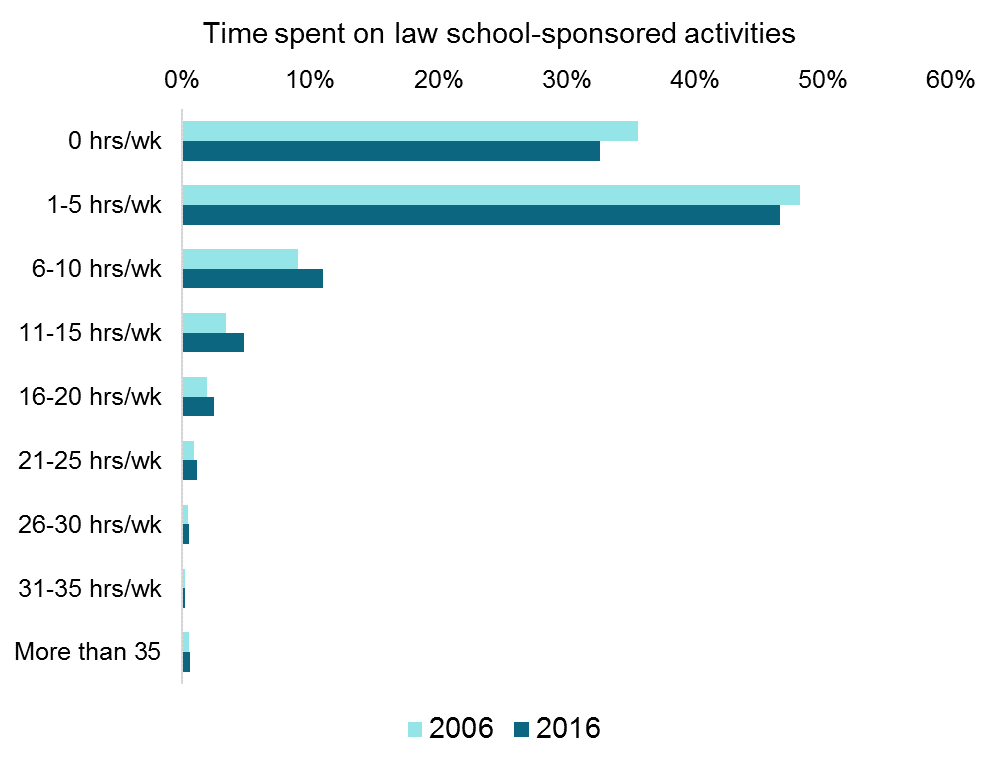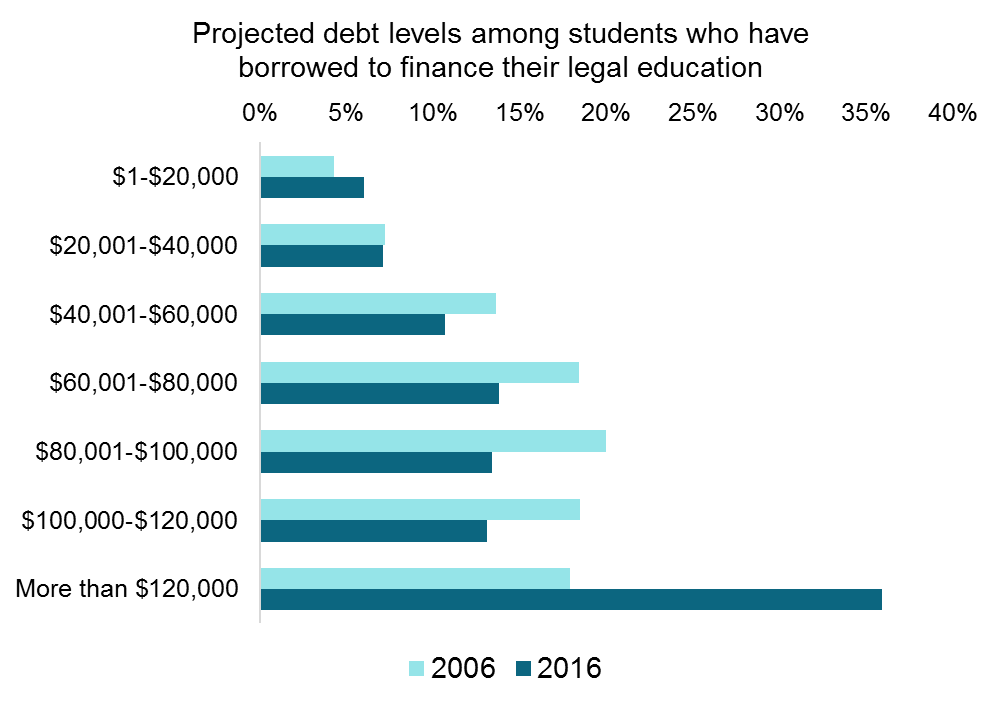In the our last post, we re-visited the LSSSE 2006 Annual Results (pdf) to look at how the trends identified as “Disappointing Findings” in 2006 compare to the results from the LSSSE 2016 survey. Today we will look at what patterns in law student engagement have remained the same.
What has not changed in the last decade?
Although participation in public service has increased among law students, participation in law school-sponsored organizations (clubs, journal, committees, moot court, etc.) among all law students has stayed relatively stable. More than a third of law students (36%) spent no time during the week participating in these organizations in 2006; in 2016 the non-participation rate dipped only slightly to 33%.

Surprisingly, at first glance the student debt load appears unchanged from 2006 to 2016. In 2006, the LSSSE Annual Results noted that of those students at U.S. law schools who incurred debt related to their legal education, 75% will owe more than $60,000 by graduation. In 2016, that number was 76%. However, if we look at the distribution of debt by category, we see a remarkably different picture. In 2006, survey respondents selected their projected debt law school debt using the following categories:
- $0
- $1-$20,000
- $20,001-$40,000
- $40,001-$60,000
- $60,001-$80,000
- $80,001-$100,000
- $100,000-$120,000
- More than $120,000
In 2016, those categories were expanded to more accurately capture higher debt levels among law students:
- $0
- $1-$20,000
- $20,001-$40,000
- $40,001-$60,000
- $60,001-$80,000
- $80,001-$100,000
- $100,000-$120,000
- $120,001-$140,000
- $140,001-$160,000
- $160,001-$180,000
- $180,001-$200,000
- More than $200,000
If we collapse the higher categories from the 2016 data into a single “More than $120,000” category to compare with the 2006 data, it becomes clear that student loan debt has become much more onerous for law students in 2016 compared to 2006, despite the fact that the overall percentage of students who owe more than $60,000 has remained unchanged.

The pattern is similar among students who wish to work for public interest organizations, which generally pay less than other law careers. In 2006, the LSSSE Annual Results warned that 67% of aspiring public interest lawyers expected to owe more than $60,000 upon graduation. In 2016, the exact same percentage (67%) of students hoping to work for public interest organizations reported expecting to owe more than $60,000, but the percentage of students who wish to work for public interest organizations and who will owe more than $120,000 has approximately doubled.

The LSSSE 2016 results show that while the percentage of students who will owe more than $60,000 has not changed between 2006 and 2016, students in the highest borrowing categories are taking on significantly heavier financial burdens than students in 2006.
